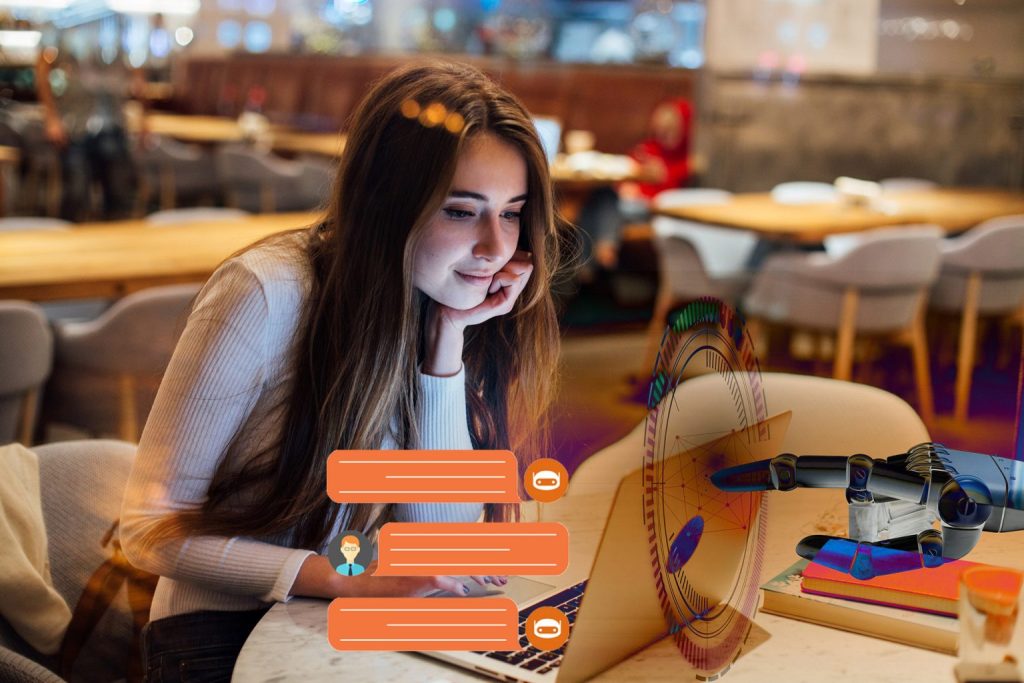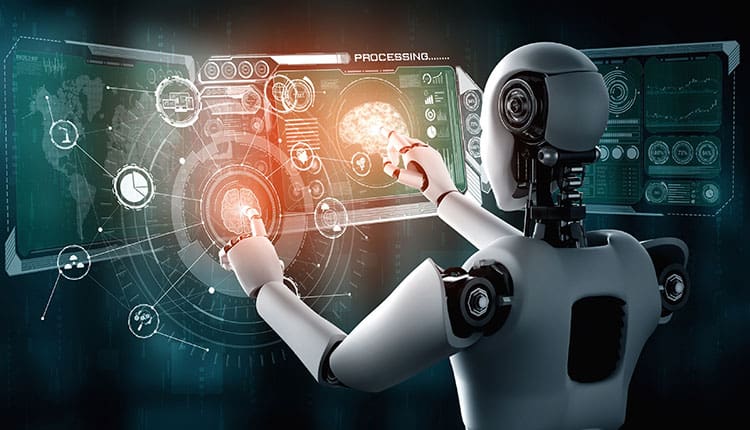
Chatbots for Education Use Cases & Benefits
This user-friendly option provides convenient and efficient access to information, enhancing the overall student experience and streamlining administrative processes. Whether it’s admission-related inquiries or general questions, educational chatbots offer a seamless https://chat.openai.com/ and time-saving alternative, empowering students with instant and accurate assistance at their fingertips. The implications of the research findings for policymakers and researchers are extensive, shaping the future integration of chatbots in education.
With the help of AI (artificial intelligence) and ML(machine learning), evaluating assessments is no longer limited to MCQs and objective questions. Chatbots can now evaluate subjective questions and automatically fill in student scorecards as per the results generated. At the same time, students can leverage chatbots to access relevant course materials for assessments during the period of their course. They can also use this platform to create alumni groups and various activity clubs. Intelligent chatbots can continuously interact with students and solve queries rapidly.
They serve as virtual assistants, aiding in student instruction, paper assessments, data retrieval for both students and alumni, curriculum updates, and coordinating admission processes. ChatGPT works by using natural language processing and machine learning algorithms to understand the needs of students. The chatbot can interpret student questions and provide accurate and helpful answers. ChatGPT can also provide personalized recommendations based on a student’s learning history, helping them to improve their academic performance over time. Overburdened institutional staff can deploy chatbots to help deliver a superior learning experience to their students in a “hands-off” way. Any repetitive tasks that are data-driven can be delegated to a bot powered by AI technology.
One field requiring research and development that will be useful for teachers is the accessibility of fine-tuning LLMs with specific course information. Although methods that require less expensive hardware are being developed (Dettmers et al., 2023), it is still inaccessible to the general public without costly computers. AI and chatbots are continuing to develop at a rapid rate and will undoubtedly be a part of the future. To better prepare students and teachers, education on chatbot use should be integrated into the current curriculums as more research is conducted on best practices. PR is the perception that adopting a technology, despite having benefits, may also have negative outcomes.
It engaged in text-based conversations and demonstrated the ability to exhibit delusional behavior, offering insights into natural language processing and AI. Later in 2001 ActiveBuddy, Inc. developed the chatbot SmarterChild that operated on instant messaging platforms such as AOL Instant Messenger and MSN Messenger (Hoffer et al., 2001). SmarterChild was a chatbot that could carry on conversations with users about a variety of topics. It was also able to learn from its interactions with users, which made it more and more sophisticated over time. In 2011 Apple introduced Siri as a voice-activated personal assistant for its iPhone (Aron, 2011).
Initial use of chatbots can be challenging, and some students may not understand how to prompt them correctly to achieve the desired result (Kaur et al., 2021). In addition to the courses recommended above for educating teachers and students on practical uses of chatbots, hands-on courses should be developed for teachers and students on how to use the technology. Although chatbot technology is novel, PEU may increase over time as the public becomes more accustomed to using the technology. Chatbot use in education can provide benefits to both the student and the teacher. Chatbots have been shown to be capable of providing students with immediate feedback, quick access to information, increasing engagement and interest, and creating course material individualized to the learner. Although chatbots can provide information, they should not act as a substitute for, instead of spurring the development of students’ critical thinking and analytical skills.
They should not be used for malicious purposes, harassment, hate speech, or any activity that violates applicable laws or regulations. Ethical issues such as bias, fairness, and privacy are relevant in university settings. Universities should address these concerns and establish ethical guidelines for the benefits of chatbots in education responsible use of AI technologies. Two recent articles in the journal Nature described its application to weather forecasting. So far, the institute has helped more than 10k students, sent over 40k messages and saved 4+ days worth of support that they would have sent answering to these questions manually.
In this case, the AI chatbot will understand their unique preferences and provide resources tailored to their unique styles. Admission process- Chatbots help generate leads through the use of channels beyond the website like WhatsApp, Facebook and Instagram. They then collect each prospect’s information and use that to increase conversions through personalised engagement and quality interaction. They then provide prospects with all required information on the institution and help ease the processes by answering all queries and easing up legacy processes.
However, this entire process can be made easier and more interesting with a chatbot. I am looking for a conversational AI engagement solution for the web and other channels. The UK Cabinet wanted to run a campaign to reach out to students, especially from underrepresented sections of society, and encourage them to take more interest in STEM studies.
With edtech companies at its core, chatbot for education has become a new norm and made life easier for students, professors and even the administration department. Chatbots can provide students with immediate feedback, assisting the metacognitive processes of learning (Chang et al., 2022; Cunningham-Nelson et al., 2019; Guo et al., 2022; Okonkwo & Ade-Ibijola, 2021; Wollny et al., 2021). Similar feedback functions are incorporated on a smaller scale into software applications such as Grammarly, Microsoft Word, and Google Docs. Utilizing chatbots, students can make their statements more clear and concise (Cunningham-Nelson et al., 2019) and receive assistance solving difficult problems (Kaur et al., 2021).
How can Engati’s education chatbot help you ?
For teachers, the 24/7 availability of a chatbot for education means on-time assistance with admin-related tasks, lesson planning, and troubleshooting technical issues. Chatbots have become a staple in education, helping both students and teachers in a bunch of ways. When it comes to students, an AI-based bot can offer on-the-go feedback and create personalized learning plans. For example, if someone constantly scores less than 50% in tests and assessments, a bot can be used to curate a study plan (tailored to a slow pace), suggest valuable course materials, and help them identify their weak points.
In addition, this collected data can provide educators and administration with useful information to profile and predict the likelihood of success a student may have in a course (Zawacki-Richter et al., 2019). This means that teachers can develop systems to identify students at risk of failing and offer appropriate guidance and intervention. With a one-time investment, educational institutions can deploy AI-based chatbots to promote self-learning, level up performance, and provide prompt assistance to their students. As we move toward the future, AI-based chatbots may be used in collaboration with gamification and flexible learning models.
This ensures that the chatbot is providing the user with the most relevant and up-to-date information. A systematic review follows a rigorous methodology, including predefined search criteria and systematic screening processes, to ensure the inclusion of relevant studies. This comprehensive approach ensures that a wide range of research is considered, minimizing the risk of bias and providing a comprehensive overview of the impact of AI in education. Firstly, we define the research questions and corresponding search strategies and then we filter the search results based on predefined inclusion and exclusion criteria.
EXISTING USERS
Researchers have also developed systems that can automatically detect whether students are able to understand the study material or not. Edtech bots can help students with their enrolment processes and further provide them with all the necessary information about their courses, modules, and faculties. These tutoring systems can also cater to the needs of neurodivergent students who may have learning disabilities and help all students understand difficult topics and subjects by customising their learning plans. In 2023, AI chatbots are transforming the education industry with their versatile applications. Among the numerous use cases of chatbots, there are several industry-specific applications of AI chatbots in education.
- Users should prioritize the privacy and data protection of individuals when using chatbots.
- They can ask questions about their major, find out what would happen if they changed majors, how that would impact their course load, and get course recommendations.
- Therefore, this section outlines the benefits of traditional chatbot use in education.
- Chatbots can provide students with immediate feedback, assisting the metacognitive processes of learning (Chang et al., 2022; Cunningham-Nelson et al., 2019; Guo et al., 2022; Okonkwo & Ade-Ibijola, 2021; Wollny et al., 2021).
Now we can easily explore all kinds of activities related to our studies, thanks to these friendly AI companions by our side. More recently, more sophisticated and capable chatbots amazed the world with their abilities. Among them, ChatGPT and Google Bard are among the most profound AI-powered chatbots. It was first announced in November 2022 and is available to the general public. ChatGPT’s rival Google Bard chatbot, developed by Google AI, was first announced in May 2023.
But no more; a free chatbot for education boasts a never-ending capacity to simultaneously engage with the entire student body. When it comes to students, an AI chatbot for education is that friendly companion who won’t leave your side, whether it’s 3 am or 6 pm on a stormy evening. It promotes self-paced learning by providing timely guidance related to assignments, exam prep, and complicated subtopics, to name a few. You can foun additiona information about ai customer service and artificial intelligence and NLP. Uses of chatbots for education are likely to grow and become increasingly sophisticated as the technology advances and expands. Researchers have already developed systems that possess the ability to detect whether or not students can understand the study material.
In addition, this chapter outlines the potential barriers teachers may face if choosing to adopt chatbots and provides recommendations to help facilitate successful chatbot integration. AI chatbots are reshaping the education landscape by offering personalized support, scalability, and efficiency. They contribute to more inclusive and engaging learning environments while providing valuable data-driven insights for educators. As the education sector continues to evolve, AI chatbots are poised to play an increasingly essential role in shaping the future of learning.
What are the use cases of educational chatbots?
Considering Microsoft’s extensive integration efforts of ChatGPT into its products (Rudolph et al., 2023; Warren, 2023), it is likely that ChatGPT will become widespread soon. Educational institutions may need to rapidly adapt their policies and practices to guide and support students in using educational chatbots safely and constructively manner (Baidoo-Anu & Owusu Ansah, 2023). Educators and researchers must continue to explore the potential benefits and limitations of this technology to fully realize its potential. The integration of artificial intelligence (AI) chatbots in education has the potential to revolutionize how students learn and interact with information. One significant advantage of AI chatbots in education is their ability to provide personalized and engaging learning experiences.
However, choosing the most relevant and accurate one for you is important. And, if you want to convert these files to and from compatible formats for sharing and uploading concerns, try a full-fledged tool like theonlineconverter that lets you process high-quality conversions. The best part about chatbots is the quick resolution of problems as well as shortening the cycle of procedures. The bot guides each and every student and provides relevant information to them. Their responses are stored for the consultancy to look at and take the standard operating procedure (SOP) further from here.
They found the platform so intuitive that they succeeded in building an almost human-sounding bot in just fourteen days. This helped them achieve better-than-expected results for both students and faculty members. Conversational AI is revolutionizing how businesses across many sectors communicate with customers, and the use of chatbots across many industries is becoming more prevalent.
Special care must be taken in situations where faulty information could be dangerous, such as in chemistry laboratory experiments, using tools, or constructing mechanical devices or structures. In an experiment in which the chatbot is asked to design a trendy women’s shoe, it offers several possible alternatives and then, when asked, serially and skillfully refines the design. For example, a tech institute created a Whatsapp chatbot for their website using botsify.. The main purpose was to help prospective and enrolled students with the latest information, FAQs, campus news, course updates and more. Whether you want a chatbot for an institute, a consultancy or a college, the educational chatbot has to be different than a regular B2C chatbot.
They range from self-paced online programs and apps to the opportunity to order essay papers from expert writers. A renowned quote by Ken Blanchard, “Feedback is the breakfast of champions.” can never go wrong. Collecting feedback on a daily basis is extremely important, no matter which industry you belong to.
Registration assistants
With software like DialogFlow, no coding or prior experience is necessary for a basic, text-based build. However, it is recommended that someone with close knowledge of the content have primary editing access to the chatbot. For more ideas, reach out to the Digital Learning Solutions team at GSE IT. Instructors can gather anonymous feedback either on a granular level (eg, regarding a particular class session), or more generally (eg, about the arc of learning over an entire course). More generalized feedback chatbots have the advantage of reuse from session-to-session or year-to-year. Instructors can read through anonymous conversations to get a sense of how the chatbot is being utilized and the nature of inquiries coming into the chatbot.
Chatbots also follow up with prospects and assist in the final enrolment and onboarding process. They are more efficient, offer convenience, can be integrated with existing databases and legacy systems and improve the actual learning process. Fryer and Carpenter did an experiment where 211 students were asked to chat with ALICE and Jabberwocky chatbots.
The findings emphasize the need to establish guidelines and regulations ensuring the ethical development and deployment of AI chatbots in education. Policies should specifically focus on data privacy, accuracy, and transparency to mitigate potential risks and build trust within the educational community. Additionally, investing in research and development to enhance AI chatbot capabilities and address identified concerns is crucial for a seamless integration into educational systems. Researchers are strongly encouraged to fill the identified research gaps through rigorous studies that delve deeper into the impact of chatbots on education.
What are the applications of chatbots in education?
Time management is a crucial skill for students and one that can be challenging to master. ChatGPT can help you to manage your time more effectively by providing you with tips and strategies for managing your workload. The chatbot can also help you to set and achieve goals, and track your progress over time. ChatGPT is designed to provide quick and accurate answers to your questions. Whether you’re looking for information on a specific topic or need help understanding a difficult concept, ChatGPT can provide you with the answers you need. ChatGPT is an AI-powered chatbot that offers a number of benefits for students.
Exploring the long-term effects, optimal integration strategies, and addressing ethical considerations should take the forefront in research initiatives. In this section, we present the results of the reviewed articles, focusing on our research questions, particularly with regard to ChatGPT. ChatGPT, as one of the latest AI-powered chatbots, has gained significant attention for its potential applications in education. Within just eight months of its launch in 2022, it has already amassed over 100 million users, setting new records for user and traffic growth.
It can not only help students learn online but teachers can get assistance in the evaluation, grading and student feedback collection. Today many big names are using AI chatbots in eCommerce to improve their customer service and to engage more and more audiences to stay relevant and visible. Apart from business, other sectors are also deploying chatbots including educational institutes and educators.
(PDF) Chatbots and Virtual Assistants in Education: Enhancing Student Support and Engagement – ResearchGate
(PDF) Chatbots and Virtual Assistants in Education: Enhancing Student Support and Engagement.
Posted: Mon, 08 Jan 2024 08:00:00 GMT [source]
If students end up being confused and unclear about the topic, all the efforts made by the teachers go in vain. Admitting hundreds of students with varied fee structures, course details, and specializations can be a task for administrators. Also, with so many variations, there is a scope for human error in the admission process. Every chatbot is different, and depends largely on how much content you put in and how robust a conversation you want to design.
- Chatbots have become a staple in education, helping both students and teachers in a bunch of ways.
- Staff can also benefit from chatbots when there are changes in procedures or processes.
- Among them, ChatGPT and Google Bard are among the most profound AI-powered chatbots.
- The bot guides each and every student and provides relevant information to them.
- Another early example of a chatbot was PARRY, implemented in 1972 by psychiatrist Kenneth Colby at Stanford University (Colby, 1981).
Suggestions, stories, and resources come from conversations with students and instructors based on their experience, as well as from external research. Specific sources listed are only for reference and will evolve with the evidence base. All conversations are anonymous so no data is tracked to the user and the database only logs the timestamp of each conversation. If you have questions about student data, feel free to reach out to GSE IT. If the chatbot cannot answer the user’s query, it should provide continuous feedback until the question is answered or connect the user to a human who can answer the question via a live chat function.
Users are responsible for how they use the content generated by chatbots when interacting with it. They should ensure that the information they provide and how they use the model aligns with ethical standards and legal obligations. Here, we discuss some of the advantages, opportunities, and challenges of chatbots in primary, secondary, and higher education. As soon as a student clicks ‘Get Started’ the chatbot Chat PG welcomes and responds to student queries with detailed information. If need be, students can get in touch with a human support representative by clicking ‘Human Help’ in the top menu. Since the world is filled with millions of prospective students enrolling into colleges and universities across the globe, the number of queries each institution or consultancy receives over its website is humongous.
UCF Part of $7.6M Study on Benefits of AI-Enhanced Classroom Chatbots – UCF
UCF Part of $7.6M Study on Benefits of AI-Enhanced Classroom Chatbots.
Posted: Tue, 16 Jan 2024 08:00:00 GMT [source]
This cost-effective approach ensures that educational resources are utilized efficiently, ultimately contributing to more accessible and affordable education for all. In terms of application, chatbots are primarily used in education to teach various subjects, including but not limited to mathematics, computer science, foreign languages, and engineering. While many chatbots follow predetermined conversational paths, some employ personalized learning approaches tailored to individual student needs, incorporating experiential and collaborative learning principles. Challenges in chatbot development include insufficient training datasets, a lack of emphasis on usability heuristics, ethical concerns, evaluation methods, user attitudes, programming complexities, and data integration issues. The future of AI Chatbots in education looks promising, with these assistants providing personalized guidance to students according to their pace.
Firstly, they can collect and analyze data to offer rich insights into student behavior and performance to help them create more effective learning programs. Secondly, chatbots can gather data on student interactions, feedback, and performance, which can be used to identify areas for improvement and optimize learning outcomes. Thirdly education chatbots can access examination data and student responses in order to perform automated assessments. The bots can then process this information on the instructor’s request to generate student-specific scorecards and provide learning gap insights. Chatbots in education serve as valuable administrative companions for both prospective and existing students. Instead of enduring the hassle of visiting the office and waiting in long queues for answers, students can simply text the chatbots to quickly resolve their queries.
This improves communication and increases the speed at which staff can be provided with new information. For instance, if students consistently receive solutions or information effortlessly through AI assistance, they might not engage deeply in understanding the topic. These FAQ-type chatbots are commonly used for automating customer service processes like booking a car service appointment or receiving help from a phone service provider. Alternatively, ChatGPT is powered by the large language models (LLMs), GPT-3.5, and GPT-4 (OpenAI, 2023b).
So, whether you’re confused with an Algebra problem from the last class or have questions about the exam schedules, these AI-based bots are here to aid you. With 2.79 million students enrolled in online colleges and universities, hundreds of regular course queries are a part of the equation. This is where chatbots for education come in handy, assisting parents and teachers with all their concerns, from fee structures to scholarship queries and completion dates. Having an educational chatbot also increases conversion rates for your organization since students receive on-time guidance on any course-related queries, clearing their doubts and making it easier to enroll.






